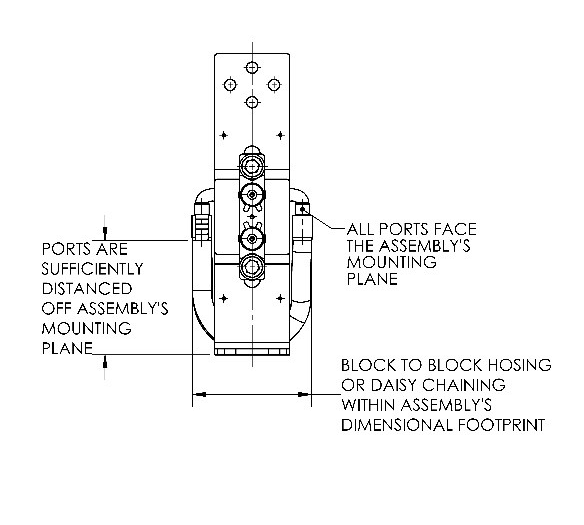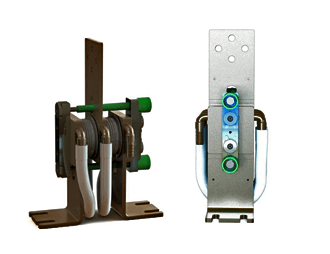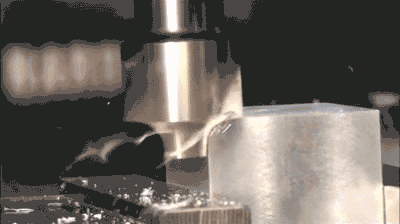CFD Analysis Flow Simulation Models and Thermal Performance
Next we performed a CFD analysis – flow simulation studies were set up for both the client’s existing assembly model against Centrx’s conservation design. Careful consideration was given to ensure both models assumed exactly the same simulation settings and environments. In general the side-by-side studies assumed heat radiation of solids, gravity, 2000 watt SCR’s and fully developed water flow of 2 GPM. Again the Centrx assembly demonstrates a nice advantage maintaining the SCR’s core at an average lower operating temperature as per the thermal images below.


Port Location and Orientation
Finally, hosing the assembly for coolant was addressed. Because the ports in Centrx’s high performance SCR Heat Sinks point toward the assembly’s mounting plane, and are located a sufficient distance from that plane, these SCR Heat Sinks hold a monumental advantage over all others in the industry. Their unique orientation permits hose daisy chaining, or hosing block to block, in a much more space-efficient manner. Located beneath the assembly, they exist without enlarging the overall dimensional space foot print.
Results: Original Objectives Exceeded
 The resulting figures of the CFD analysis are as follows.
The resulting figures of the CFD analysis are as follows.
- 37 percent reduction of weight
- More than 21 percent space requirement savings (deriving 12 percent savings from hard component change (SCR Heat Sinks), and a bit more than 9 percent from hosing space saved)
- More than 5 percent thermal heat reduction at SCR Heat Sink core
Previous Page 2 of 2
